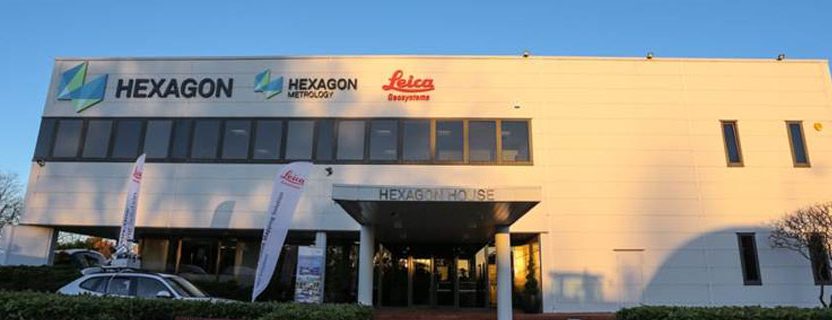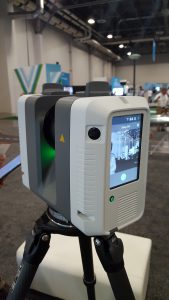Getting to see Leica Geosystems’ shiny new RTC360 scanner and delve into the details were only part of a fantastic day when I toured Leica Geosystem’s facility at Milton Keyes in the UK recently. On the same site is also the UK technical support and servicing department that was only too happy to let me look around and ask questions.
For me it is a rare opportunity to see how Leica Geosystems units are serviced and maintained for users. Being from a GIS background, I find it amazing that you can take your equipment to the manufacturer and have it re-calibrated to maintain its accuracy and have it repaired—even older units.
My car is almost 10 years old and I have struggled to find original parts, but if you take an old total station to be serviced, chances are they will have most of the hundreds of small parts you need. My mind is completely blown by this concept, and yet, as I walk into the service center, right there is a mixture of new and old equipment undergoing recalibration tests.
Service Center
The service center looks like a long corridor with benches perpendicular at even spaces along its length. On the ceiling are targets, strategically placed and anchored. As you would expect, everything is clean and everyone is wearing an antistatic wristband; such is the level of caution.
I am told by the service technician that each piece of equipment is subjected to a checklist of 70 tests, which could take anywhere between a few hours and a day. Although the tests are run from the computer, make no mistake that all the calibration, adjustment, replacement, and tightening are done by a qualified factory HQ service engineer who has the experience and knowledge to ensure the equipment will pass each of the steps.
Each workstation capable of both total station and GNSS testing of Leica Geosystems’ products ranges with specialized tooling for all items in the product basket and to a two-prism baseline with SQS traceability.
To see this work in practice is incredible. Before my eyes I see a total station dismantled whilst the technician ensures the laser meets the tuned calibration target and then verifies the result against the correct value on screen. A few twists and turns of the screwdriver, and the beam is super sharp again. On to the next test.
I’d love to say this show is put on just for me, but as I walk through the service center, there are technicians at different stages of work, some with dismantled machines, some with parts they are fitting, and others checking numbers against numbers popping up on their computers. The care and attention afforded is far superior to anything I get when I get my car serviced!
Through a set of double doors, I get to see the parts store, and it is everything you want it to be. Racks of parts from systems all over the years are all neatly ordered on shelves, then a few tripods, some drone rotors, and even some lenses all covering many years and types of units. I’m pretty sure that if you wanted to build yourself an old TCRA 1101 with new parts, you would be able to.
Certification
What is difficult to convey through the medium of the page is just how clean and cared-for everything is. Like when you go to a hospital or a car-painting facility, there is no dust or traces of anything that may cause issue with the part functioning at 100%.
With the recent requirement for calibration certificates as more contractors become ISO90001 accredited, it is great to know that the UK service center baseline is “Gold certificate standard.” The instrument used to verify the baseline is tested by the accredited calibration laboratory in Heerbrugg, Switzerland, acknowledged, and the test results are directly traceable to national standards. They include measurement uncertainties and are supplemented by detailed measurement reports.
[Calibration Certificates Gold are internationally acknowledged certificates that can only be issued by calibration laboratories with national accreditation. The accreditation (SCS 079) is in accordance with the standard ISO/IEC 17025 and is granted by the Swiss Accreditation Service (SAS), member of ILAC (International Laboratory Accreditation Cooperation).]
Common Standards
When I ask about how all this is achieved and maintained, I’m told how the Leica Geosystems factory comes to help. The disparate parts of Leica work together to ensure a common standard, and this is true also of getting parts. You see, as well as having parts available in-store, the technicians can see if the parts are available in any of the other service center stores.
I am told that no matter which Leica service center you go to all over the world, you will get the same thorough and professional service for your equipment. I find this hard to believe, seeing the service before me, but my peers with experience of using different centers tell me it is true.
The tour of the facilities has opened my eyes to the attention to detail that Leica Geosystems affords on every piece of equipment they handle. It is great to see that the focus isn’t only about profit but about making sure the equipment is always running at its best. It’s almost as if it needs a tagline about “when it has to be right.”
Read about using the Leica RTC360 for virtual reality training here.


